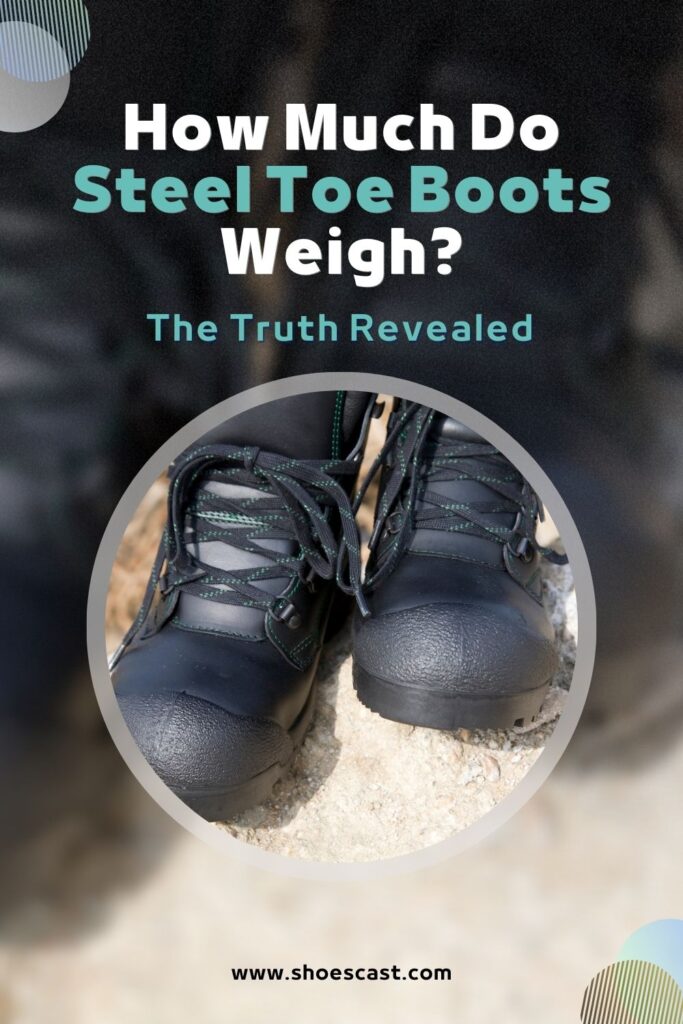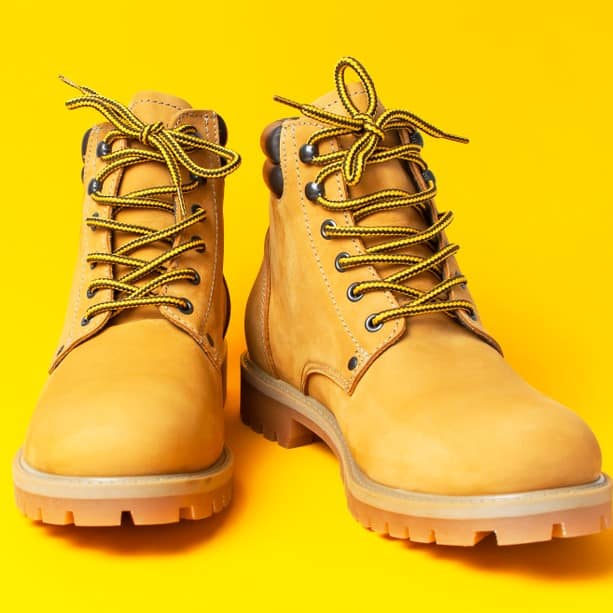Another day, another steel toe boots-related topic. Today we are going on a quest of answering yet another interesting question, which is, “How much do steel toe boots weigh?”
It is no secret that steel toe boots are heavy. Anyone who has ever worn a pair of these bad boys can testify that wearing them is no walk in the park. Or if it is a walk in the park, it sure is a heavy, tiring, and occasionally painful one.
I remember my first experience with boots that had steel toe caps. Mind you, I am not a constriction worker. Rather I’m a girl who wanted to live her best high-school punk dreams and wear the coolest-looking pair of Doc Martens.
The first time I wore them, it was snowing, and I was, of course, late for school. I had to run and lift my legs through the deep snow, trying my hardest to catch the school bus on time.
Let’s just say I got back home with sore leg muscles, blisters on my feet, and overall bodily tiredness. Those boots were so heavy for my younger self that I could barely walk in them without any pain. It took me literally months to get used to them.
However, no one can deny that my feet were well-protected. Those boots were some of the best footwear I ever had and my love for them remained to this day.
I’m sure other people who wear other steel toe boots share the same or at least similar enthusiasm as I do. But, if you can’t say that for yourself (yet!) and if you’re just curious about what these boots are like, you have come to the right place, that’s for sure.
With this article, you’ll scratch beneath the surface and begin to discover the awesome world of steel toe boots. Today, we’ll talk about their weight, the factors that affect it and the impact these boots can have on your feet.
So, buckle up and let’s see how much do steel toe boots weigh.
Are steel toe boots heavy?
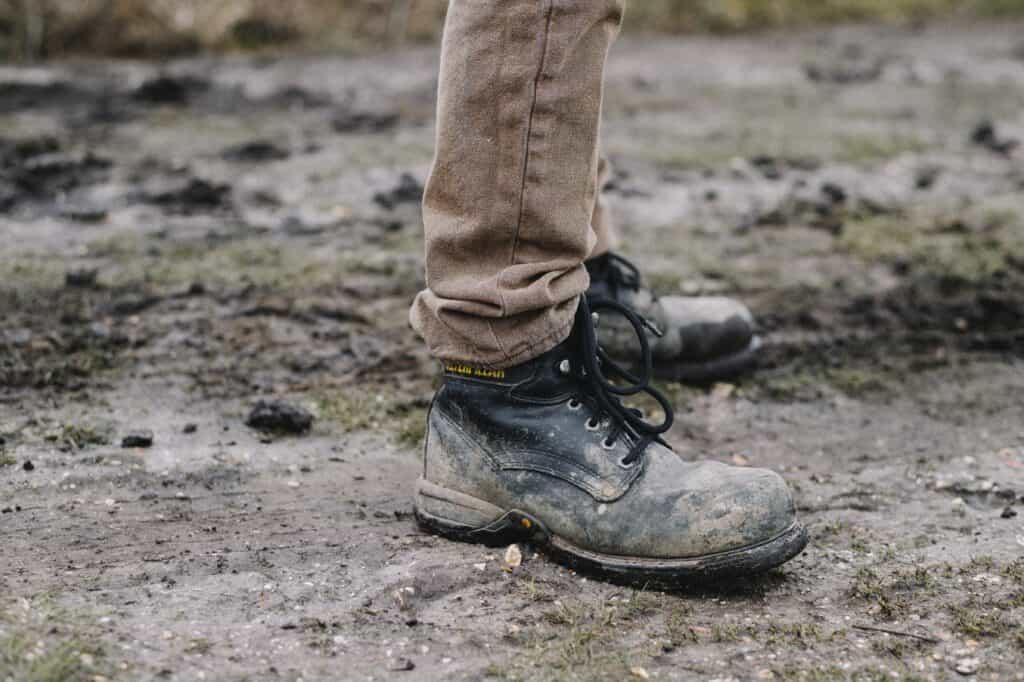
The answer to this question is not precisely definite, but rather pretty vague. To answer whether steel toe boots are heavy, you would have to say both “Yes” and “No.”
Steel toe boots have a protective reinforcement in the toe area and their weight depends on the material out of which is this protection made. It can be out of steel, aluminum or other composite materials, such as thermoplastic polyurethane (TPU).
Because of this additional protection, steel toe boots are much heavier than regular boots. They are hefty indeed, but not too heavy to make walking hard. These boots are designed for work environments, and therefore they have to be wearable.
Also, the upper of steel toe boots is made out of thicker, sturdier, and more durable materials, which add up to the weight of the boots.
These boots are heavy, that’s for sure, but you are still able to move your feet with these on. Although they might not be boots you would take to the dance floor, they sure are boots that do not compromise on protection and comfort.
How much do steel toe boots weigh?
Now comes the real question, the one we have gathered here today for. So, how much do steel toe boots weigh?
Usually, there is a standard weight of steel toe boots. An average pair of smaller steel toe boots weighs around 3 lbs to 4.5 lbs, while the bigger ones can reach the weight of 6 lbs. These numbers are acceptable and human feet can endure this amount of weight without any problems.
However, the weight of these boots can differ depending on many factors, like the design of steel toe boots, their category, the thickness of their outsoles, and others.
For example, there is a significant difference in the weight of steel toe work boots and steel toe military boots, since military ones usually weigh around 5 lbs.
Also, the difference in the material of the protective reinforcement in toe caps makes a big difference in weight. If your protective work boots have an aluminum reinforcement, they would be significantly lighter than those that have reinforcement made out of steel.
Aluminum reinforcement makes the boots a lot lighter, but it also makes them less protective. So it’s best to opt for heavier steel toe boots if your work environment isn’t full of potential foot threats.
What are some of the factors that affect the weight of steel toe boots?
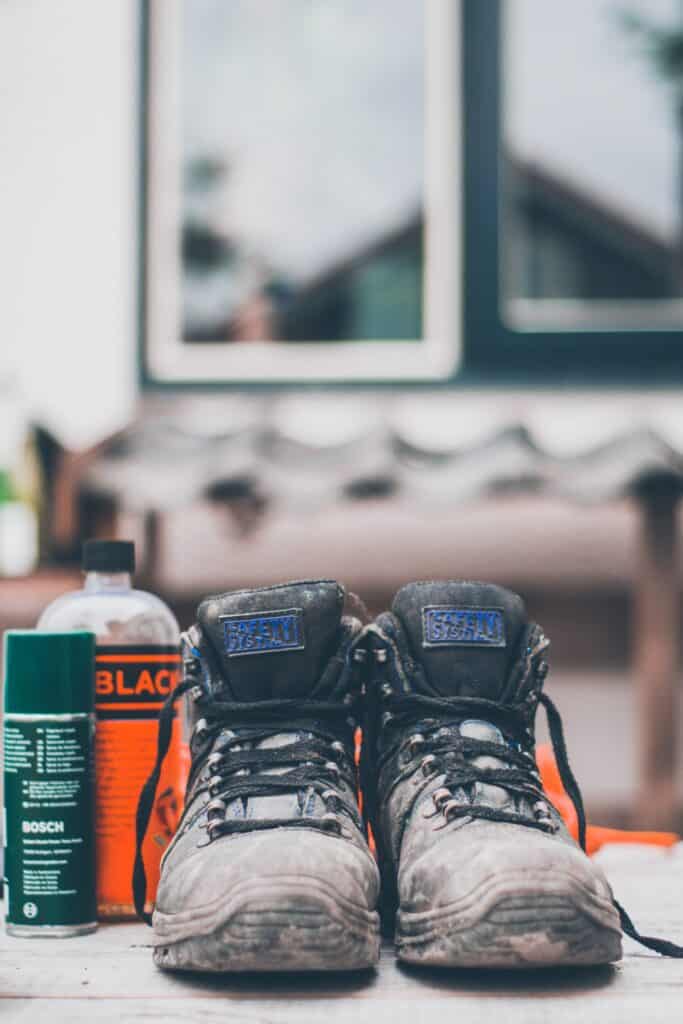
Apart from the difference between various steel toe boots and the type of protective reinforcement they have, the weight of the steel toe boots is influenced by other factors as well.
For example, the padding or the extra cushion above the insole can significantly increase the weight of the boot. If the boots have some extra padding, they will consequently be heavier.
Also, if the footbed of the boots is reinforced with features such as shock absorption or anti-fatigue, those features will add to their overall weight as well.
The factor that has the greatest impact on the weight of steel boots is the material of the outsoles. The lightest ones have leather outsoles which are very durable¸. They make boots heavier for sure, but not as much as the rest of the materials.
Rubber outsoles are a good and cheaper alternative to leather ones. They are much thicker and therefore heavier than outsoles made out of leather.
Then there are commando outsoles which are popular with hiking boots and shoes. They have a rugged profile and thick lugs which makes them the heaviest outsoles among them all.
Cork nitrile, wedge, and crepe outsoles are other types of outsoles that are generally very lightweight. They do add to the weight of the boots to some extent, but not as much as the previous ones.
Another thing that affects the weight of the boots is the material of the shank. If the boots have a steel shank, they will weigh significantly more than those that have a fiberglass shank.
Insulation in boots also increases their overall weight. This term is used to describe the level of warmth your feet get while you walk, play, or work in low temperatures.
Boot insulation is measured in grams and the most common insulation weights are 200, 400, 600, 800, and 1000+ grams. So, obviously, the more boot insulation you go for, the heavier the boot will be.
Can the weight of steel toe boots change over time?
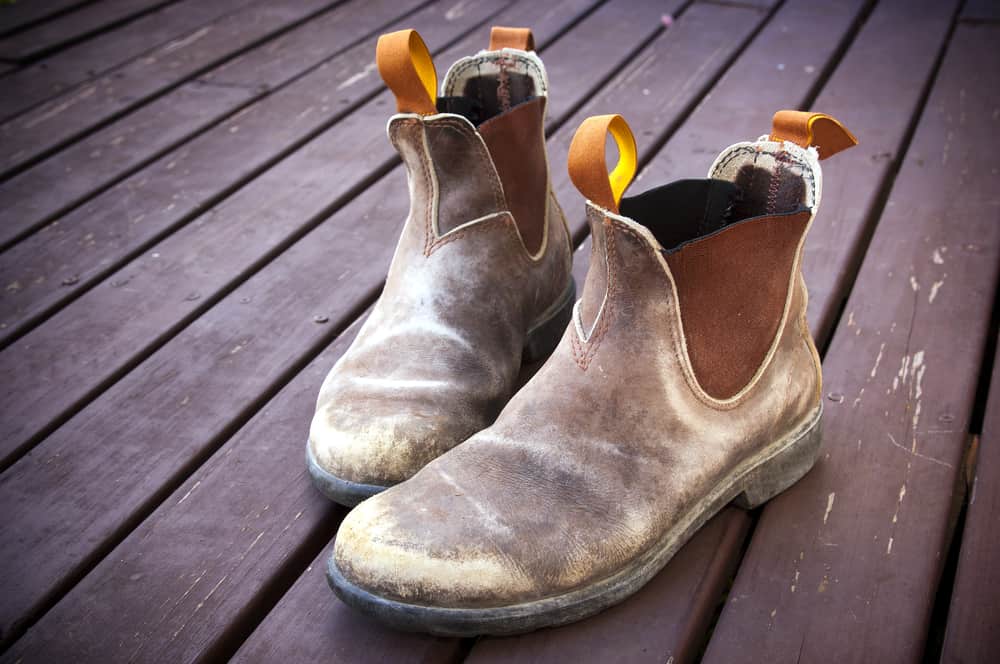
Now that we know the answer to “How much do steel toe boots weigh?”, and what are some of the factors that greatly influence the weight of those boots, it’s time to ask: can that weight change over time?
Generally speaking, the weight of steel toe boots that are not excessively worn stays the same over time. However, if religiously worn, these boots can indeed become lighter.
Sure, it might have sounded silly to you, but that question was not asked in vain. Strangely enough, steel toe boots are likely to lose some weight as they get older.
Weight changes are primarily caused by wear and tear on the outer materials of the boots, such as the outsoles and leather material covering the outer part of the boots.
Considering that the outsole is in direct contact with the ground, it’s the first to show signs of wear and tear. The constant pressure can deteriorate the outsoles of boots, slowly chopping off the outsole material. The same applies to boots with leather covers.
Keep in mind that any signs of wearing off, even the tiniest ones, are your first indicator that you should soon buy a new pair of steel toe boots. This is important because worn-out boots might not serve their initial purpose anymore and their protection level might be questionable.
So, I think you will agree with me on one thing: it is definitely better to be safe, than sorry. Right?!
What impact do heavy boots have on your feet?
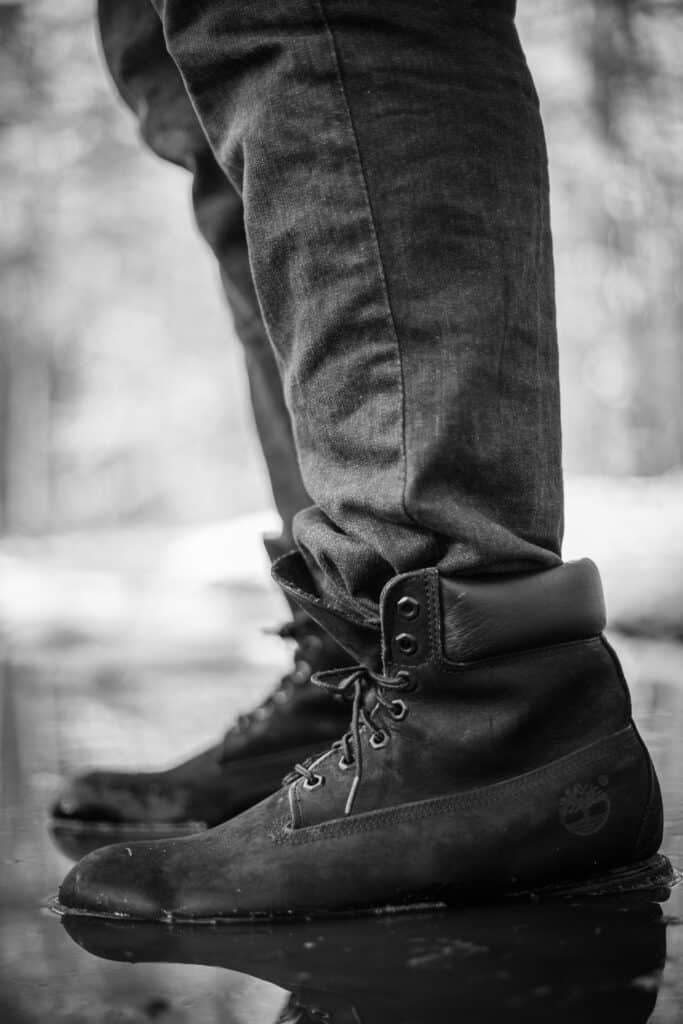
It is one thing to know how much do steel toe boots weigh and understand the science behind their weight, but it is a completely different story to be (un)fortunate enough to deal with the consequences of wearing steel toe boots.
Because, believe me, there are some undesirable consequences many people might not be aware of.
Don’t get me wrong, steel toe boots are necessary for those working environments where your feet can get severely injured. Thanks to the steel toe boots, you can go and do all those heavy-duty jobs without a single worry about your toes being cut off.
But the heaviness of these boots can be detrimental, for sure.
First of all, many people who wear steel toe boots have to deal with this thing called foot fatigue. This is a broad term that stands for an ongoing and sharp pain some people feel in their feet and lower limbs.
Over time, standing up or walking for long periods can cause the muscles in your feet to become exhausted. This can cause painful cramps and growing discomfort in your feet. Especially when you are standing and walking with added weights on your feet.
It is like you are at the gym, working out your legs, 24/7.
Other disadvantages and ill effects of wearing heavy boots include:
- Knee and joint pain due to the fact that your feet have to carry the load of those heavy boots.
- Corns are a result of constant friction and pressure. If you’ve noticed some on your feet, it could be due to wearing heavy and stiff work boots.
- Back pain is also possible since heavy steel toe boots don’t only hurt your feet but also your back. This is especially common if you wear them for a longer period of time.
- General restlessness
- Weak muscles and tendons of the legs.
